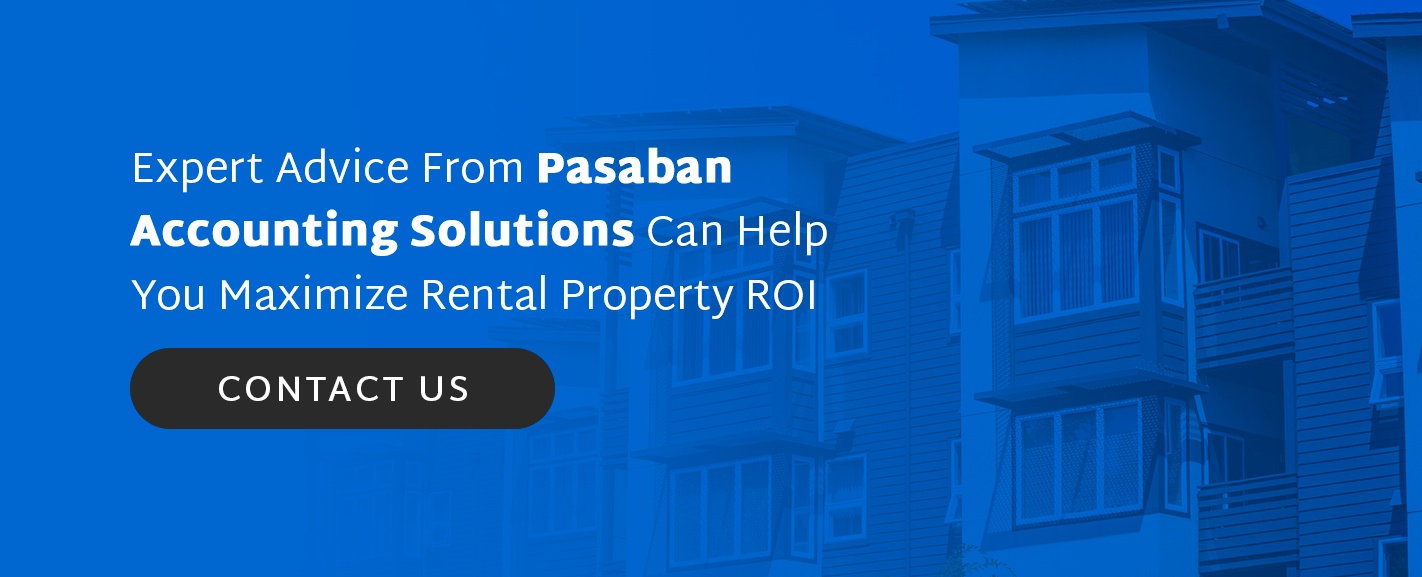Maximize ROI on Rental Properties
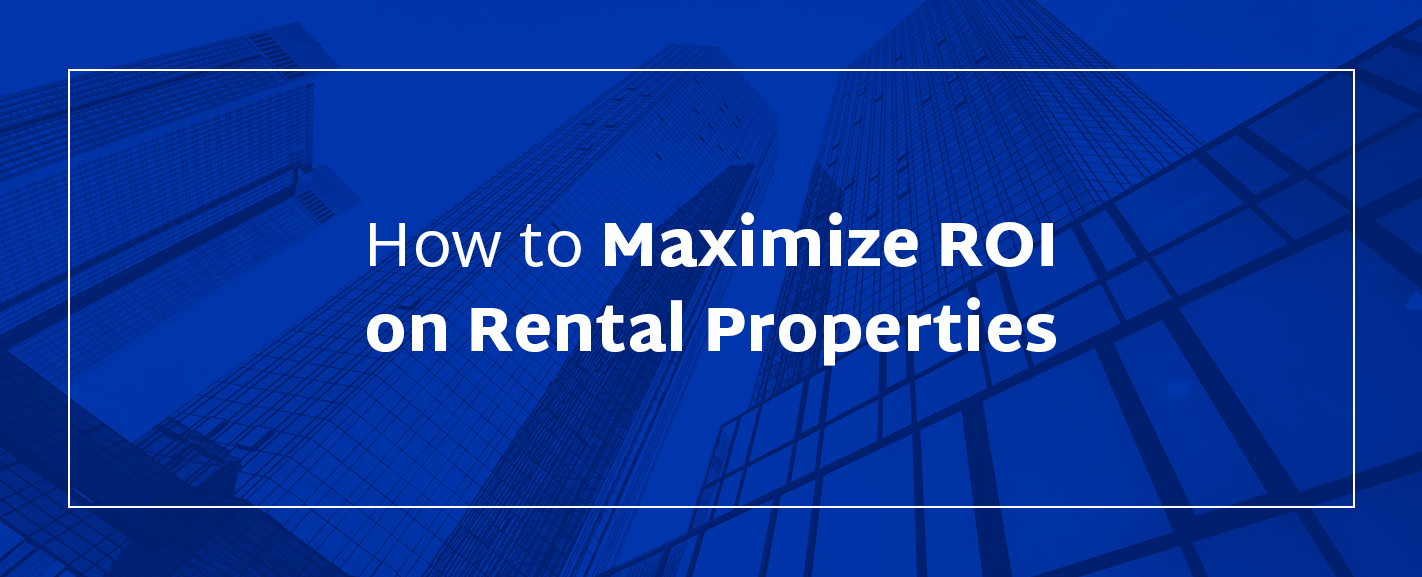
Whether you manage multiple properties or own just a single rental, one thing you want to do is get the most out of your investment. The more money your properties bring in, the higher your profit and the more stable and steady your real estate business.
If your goal is to make money with investment properties, there are a few things you can do to increase your rental income and to help your business succeed. Making a property as appealing as possible to tenants, screening potential tenants carefully and putting together a plan for regular repairs and maintenance will help you make the most of a rental property.
What Is ROI?
Return on investment, or ROI, is the amount you get from an investment, such as a rental property, compared to the amount you put into it. The higher the ROI, the better. When ROI is high, it means that you’re getting back more than you initially invested.
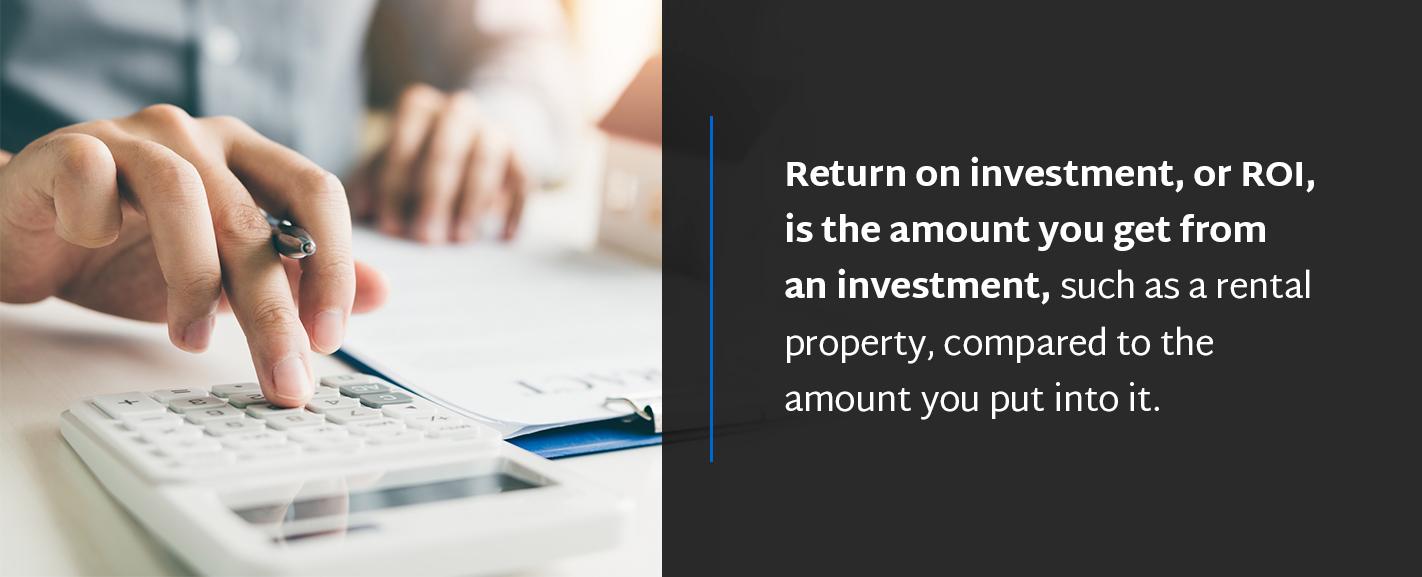
Understanding a rental property’s ROI is one of the ways you can know if your investment property is profitable. What’s a good ROI on a rental property? If you calculate ROI and find that it’s a small number or a negative number, you might decide to change course, either by improving how you market your rental properties or by selling specific properties and trying again somewhere else.
On the other hand, if you calculate your ROI and find that it’s a considerable amount, you might decide to keep on doing what you’ve been doing or try to duplicate your success with a similar property.
Several factors can affect your ROI for a rental property. They include whether you paid for the property in cash or took out a mortgage to pay for it, as well as the expenses you include when calculating your costs.
How to Calculate ROI for Your Rental Property
Several formulas exist to calculate return on investment. The basic formula to use to figure your ROI is to subtract the cost of your investment from the profit or gain. Next, divide the difference by the cost of the investment. You can use the basic ROI formula when figuring out the return on a variety of investments, not just for rental property.
For example, if you bought four shares of a stock for $100 per share, and paid a $10 commission, then sold them for $250 per share later on, you would use the following the determine your ROI:
[(250*4)-(100*4+10)]/(100*4+10)
In this case, your return on investment would be about 144%.
When you invest in stocks, you usually don’t have additional expenses beyond the commission and purchase price. It’s a different story with a rental property. Along with the initial cost to purchase the property, you need to account for the costs of maintaining the property and for other ongoing expenses, such as utilities and property tax. The formula you’d use to figure out ROI for a rental property would also be slightly different if you paid cash for the property or if you took out a mortgage.
ROI Formula for Cash Purchase
First, let’s figure out how to calculate the ROI on a rental property you paid for in cash. You purchased a four-unit building for $300,000. You paid $2,000 in closing costs and spent $18,000 fixing up the property. Your total initial investment in the building is $320,000.
Each of the units in the building rents for $1,250 per month and each unit had a paying tenant in it for 12 months. After the first year, you earned $60,000 in rent from the four apartments combined.
You also had expenses during that first year, including $2,500 in property taxes, $1,500 in utilities and $2,000 in insurance. Your total expenses for the property for the first year were $6,000. To determine your annual return, you subtract the total expenses from your rental income. In this case, your return is $54,000.
To figure out the ROI on the property for the first year, divide your return for the year ($54,000) by your initial investment ($320,000). Your ROI is 0.1688, or about 16.88%.
ROI Formula for Financed Property
Financing a property is typically a more complicated process than paying cash. There are additional costs involved when you take out a mortgage for an investment property. You’ll have higher closing costs, and you’ll also have higher monthly and annual expenses since you need to pay back the loan.
Instead of paying cash for the $300,000 four-unit rental property, you took out a mortgage on it. You paid 20% of the property’s price, $60,000, upfront. In addition to the down payment, you had closing costs of $4,000. You still spent $18,000 renovating and fixing up the property. Your total initial investment in the building is $82,000.
You rented each unit for $1,250 per month and found tenants for each unit for a full 12 months. You brought in $60,000 in rent from the four units combined over the first year.
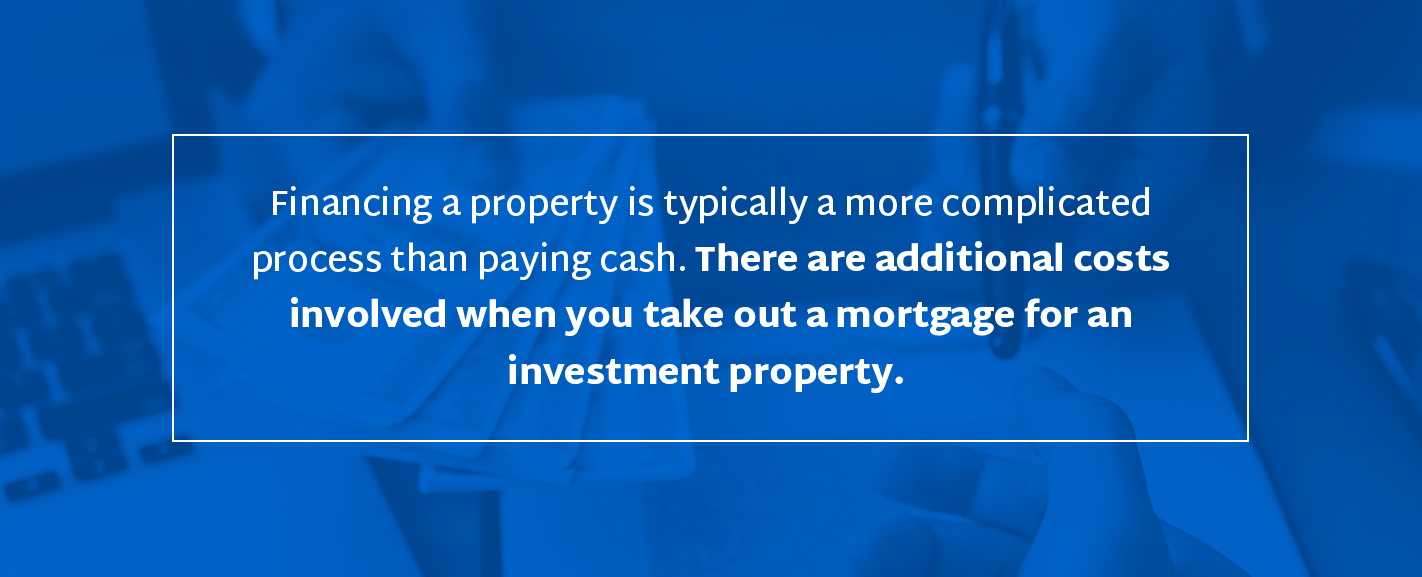
Your annual expenses for the building are the same as they would be if you paid cash. You spent $1,500 on utilities, $2,000 on insurance and $2,500 on property tax. In addition to those expenses, you had a monthly mortgage payment of $1,216. Your total expenses for the property, with the mortgage payment, were $20,592 for the year.
To figure out your return, you subtract your expenses ($20,592) from your rental income ($60,000). If you financed the building, your annual return is $39,408. To determine the ROI on a financed property, you divide the return ($39,408) by your upfront costs ($82,000) to get 0.4806, or about 48%. In this case, your ROI is considerably higher for a financed purchase compared to an all-cash purchase.
Variations That Affect ROI
The formulas above can help you calculate the ROI on a rental property in a perfect world. In each example, the properties were fully rented out for all 12 months in a year, and there were no major surprises or unexpected expenses, such as a broken furnace or a leaking pipe. In reality, you might not have a tenant in each of your properties for the full year, which affects your income. You might also need to pay for repairs or other issues, which would increase your expenses.
It’s also worth noting that although a financed property has a higher ROI than a cash purchase, the ongoing costs of a mortgage can make it more expensive in the long run compared to paying for a property in full upfront.
How to Get More ROI on Rental Properties: Prepare the Property for Rental
One of the ways to boost the ROI on a rental property is to make sure it’s rented out as much as possible. Ideally, someone will be living in an apartment or renting a commercial space every month of the year and paying their rent on time. Preparing a property for rental is an essential part of the process of getting people to sign a lease. How much work you need to do to a property to make it attractive to renters depends on the state of the building when you purchased it.
In some cases, you might need to perform major renovations to make a rental inhabitable. In others, all you might need to do is make a few small cosmetic changes or improvements.
If you would rather not spend the time, energy or money required by major renovations, you might decide to purchase a property that’s more move-in ready. That might be mean a higher upfront cost compared to buying a fixer-upper, but it can also mean that you can get tenants into the rental units more quickly, letting you start earning rental income sooner rather than later.
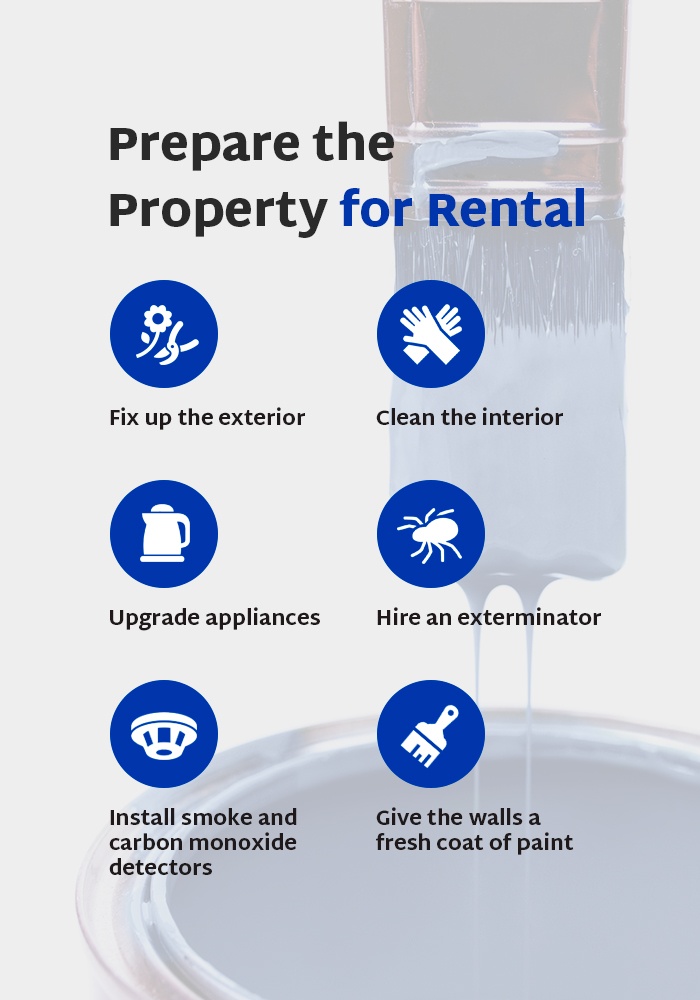
Even if you don’t have to do major renovations or upgrades to prepare a property for tenants, there are some smaller things you can do to make an apartment, home or commercial space stand out and to encourage people to sign a lease. They include:
- Fix up the exterior: When people are trying to sell a home, one of the often-repeated pieces of advice is to spruce up the exterior and boost the home’s curb appeal. The same is true when you’re making a home appealing for renters or a storefront appealing to businesses. Rake away fallen leaves, clean up any litter and plant a few shrubs or flowers to make the exterior look fantastic. The first thing potential tenants will see is the building’s outside, so ensure it makes a great impression.
- Clean the interior: Along with sprucing up the exterior, take some time to give the interior of the rental a little TLC. If the unit has carpeting, it’s a good idea to deep clean it to remove any stains, spots or odors. You might also want to dust high up in corners, the blades of ceiling fans and blinds or other window treatments. Sweep and mop uncarpeted flooring, clean up the bathrooms and wipe down the windows to make the place sparkle.
- Upgrade appliances: While you might not want to bring in top-of-the-line appliances to a rental property, it’s still a good idea to make sure the appliances in an apartment or house are at least somewhat up-to-date. While you may not need to install a new refrigerator in an office building or be responsible for high-end kitchen appliances in a restaurant, updating the HVAC system will help people feel more confident that they’ll have heat and air conditioning when they need it most. If you pay for utilities as the property manager, upgrading the appliances in a unit can mean you save money on energy bills each month.
- Install smoke and carbon monoxide detectors: Most people want to feel safe and secure at home. One way to help people feel safer is by installing smoke alarms and carbon monoxide detectors. In most cases, you’re legally required to have alarms and detectors in a home, usually at least one on each floor and in each bedroom, as well as in commercial buildings. Showing potential tenants that you take safety and the law seriously can make them more likely to sign a lease.
- Hire an exterminator: The best time to fight a pest problem is before one starts. As you ready a property for rental, hire an exterminator to come out, inspect for signs of pests and take preventative action. When you’re showing tenants the property, you can let them know that an exterminator has just been by to inspect the property.
- Give the walls a fresh coat of paint: A new coat of paint can freshen up a rental. Whether you do the painting work on your own or hire someone to do it, it’s a low-cost way to make a rental unit more attractive.
How to Earn More From Rental Properties: Attract the Right Tenants
When you manage rental properties, you want to get people to sign a lease and move in, but you also want to make sure the tenants you work with are people who are going to pay their rent on time, take care of the property and otherwise follow the rules and terms of the lease.
Having a tenant screening process in place can help you find people with a track record of being excellent tenants. Where and how you market the property can also help you find tenants who are going to be respectful and responsible. As a property manager, you want to have as big a pool of potential tenants to choose from as possible. That way, you can decide to work with someone likely to pay on time rather than feel as if you have to take a chance on a tenant who doesn’t have good references or who might have a history of late payments.

Knowing where to market your rental property and how to make the property shine will help you attract desirable tenants. You can list the property through the multiple listing service (MLS), and create a website and social media profiles for the property. Another option is to try to reach out to a niche audience. For example, if you manage an office building near a college or university, see if the school has a search portal designed for start-ups. If your apartment building is located near a big employer, see if you can post an advertisement for your rentals on a bulletin board in a break room or another area for employee announcements.
Along with listing your rentals in the right spots, it’s crucial to advertise your property in a way that puts its best foot forward. Include photos with your listings. The more pictures you include, the better. You don’t want potential tenants wondering if an office has a reception area or if an apartment has a full bath or only a shower in the bathroom. Before you take the pictures, tidy up the rooms. If you’re photographing a furnished space, make the beds in the bedroom, clear objects off of tabletops and counters and make sure there aren’t stray items scattered across the floor.
The quality of the photos you use when marketing your property also matters. A potential tenant is likely to skip over an apartment that has 11 blurry images in favor of a listing that has 25 bright, in-focus pictures. It’s a good idea to hire a professional to take the photos for you, especially if you’re not confident about your skills behind the camera.
While pictures can tell tenants a lot about the space, it’s also a good idea to use descriptive phrases and words in a listing to highlight a rental’s selling points. Remember that location matters more than almost anything in real estate. Use text to tell people about the area the rental is in. What amenities are close by? Can they walk to a park or the grocery store?
How Do I Maximize My Rental Return? Make Sure to Screen Tenants
Marketing your property where tenants are likely to see it is just the first part of finding the right people to move in. If you want to make the most of your rental, you need to make sure that the tenants moving in are going to be best. Tenant screening is an essential part of real property management.
With commercial properties, you might ask to see a company’s financial history to determine if they can pay rent and learn more about the type of business they run so you know if your building is a good fit for their needs.
When screening tenants for housing, there are some criteria you can legally use to rule people out and some criteria you can’t use. For example, you can’t deny a tenant because they happen to have children or because they are over the age of 50. You can’t say that you’d rather rent to women instead of men or refuse to rent to people based on their race, nationality or ethnicity.
What you can use to screen tenants are their rental history, their credit history and their employment reputation. You can also evaluate aspects of tenant’s behavior when deciding whether to rent to them or not. For example, if a tenant schedules a viewing, then cancels at the last minute or shows up late without a message or excuse, you might decide not to work with that person. As a property manager, you value respect and timeliness, and someone who no-shows, cancels or is late isn’t demonstrating either.
One thing to remember when screening tenants — although it’s good to listen to your gut, it’s still a good idea to screen every potential tenant thoroughly, even ones who seem trustworthy and responsible. If you like a prospective tenant, continue with the screening process to verify that your gut feeling is accurate.
Here’s what you should check and who you can call when looking into tenant applications:
- Previous landlords: Ask a tenant to provide you with a way to contact their previous landlords. Call the landlords to ask about the tenant’s payment history and how they treated the places they used to live. A history of frivolous complaints or damage should be as big of a red flag as a history of late payments.
- Current (or recent) employers: You can also call up a tenant’s current or most recent employer to find out how they are on the job. A person’s work personality and employment history can tell you a lot about them. Ask whether they show up to work on time, how long they have worked with the company and whether they get along with their co-workers.
- Income: You want to rent to a person who has enough money to pay their rent. You can ask for paystubs and W-2s to verify a potential tenant’s income. If a person recently moved for a job, ask to see an offer letter that outlines how much they will earn.
- Credit history: Run a credit check on potential tenants to see if they have a history of paying any credit accounts, such as student loans or credit cards, late and to see how much debt they have. A person who has a lot of debt might have difficulty paying their rent, even if they earn a high income.
- Criminal background: While you might not necessarily rule out a potential tenant because they have a criminal record, it’s still worth knowing what a person’s legal history is.
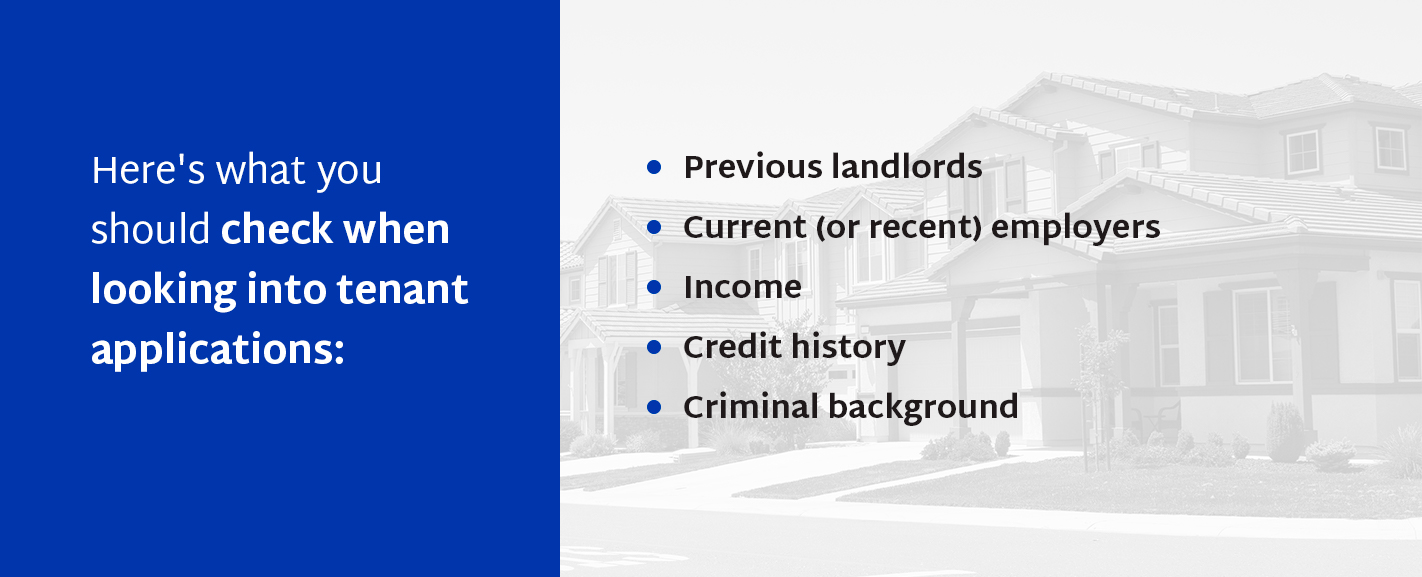
How to Manage a Rental Property to Maximize ROI
There’s more than finding reliable tenants for a property that can help you maximize its ROI. Taking good care of your apartments or other buildings will also help when it comes to getting more return on rental properties. The rule of thumb to remember as a property manager is not to let little issues snowball into big problems.
It does cost money to maintain a property’s appliances and fixtures. But in the long run, spending $100 or so to fix a small concern, such as replacing the air filters on a furnace or scheduling an annual cleaning or tune-up of the HVAC system, can help you avoid a much more expensive repair in the future. Maintaining a furnace or HVAC system will extend its life, letting you delay the replacement. Maintenance will also reduce the likelihood of a system completely breaking down or requiring a long, involved repair process.
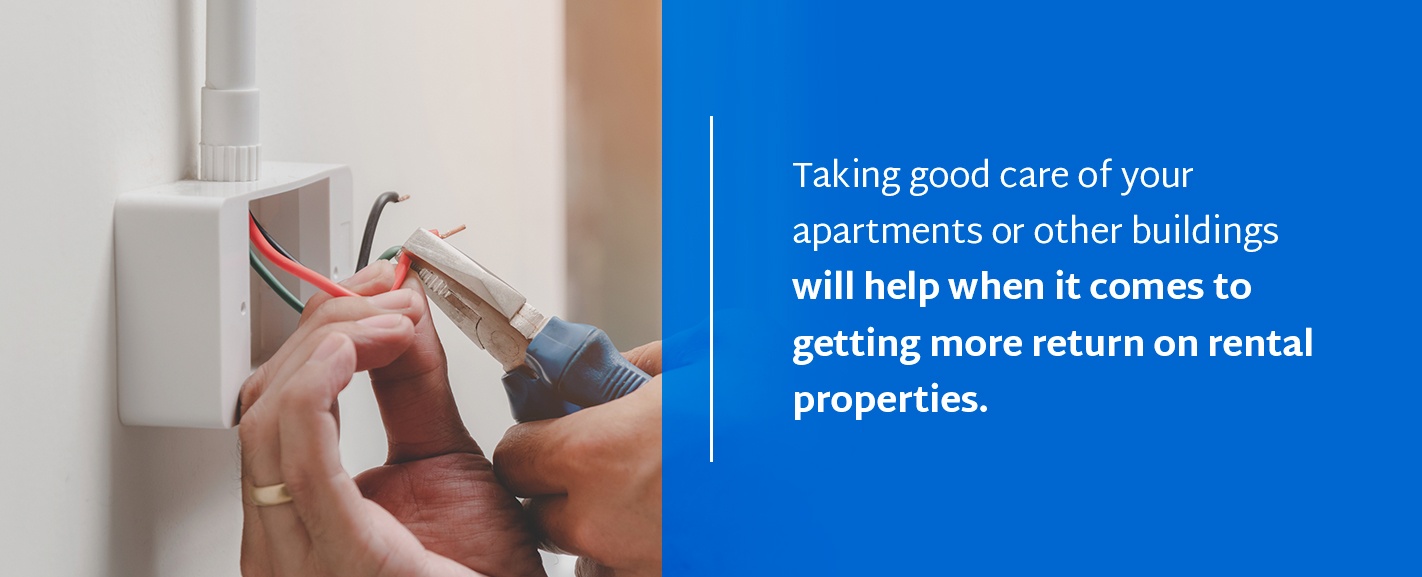
Performing ongoing maintenance helps to boost ROI in another way. Tenants are more likely to stick around in a rental when the property manager takes good care of the building. If you’re regularly sending out people to replace lightbulbs, clean up the common areas and fix up little issues, tenants will notice.
They’ll also notice how quickly you respond to any repair requests or other concerns they express. If you are in the habit of responding promptly to issues and requests, tenants are more likely to want to stay in your rentals, rather than move on and try their luck elsewhere. Having happy tenants who renew their leases helps you avoid those months when a unit might sit empty.
How to Collect Rent on Time to Increase ROI
For you to recoup a return on an investment property, your tenants need to pay their rent, ideally on time. When people are late with payments, it affects your bottom line in a few ways. You have to spend extra time and energy following up with them to see where their rent is and to verify that they plan on paying soon. If they continue to be late or never pay their rent at all, you end up having to go through the process of evicting them, which can be costly and time-consuming.
Screening your tenants and choosing people with a history of timely payments and excellent credit is one way to make sure your tenants pay their rent when it’s due. Another way to make sure people pay on time is to make it as easy as possible for them to do so. The more payment options you offer tenants, the better. For example, you might accept checks, cash and online payments or credit cards. You can also give tenants the option of having their rent deducted from their bank accounts automatically each month. That way, they can’t forget to pay, as the process takes care of itself.
You can also encourage people to pay on time by giving them a financial incentive to do so. Let tenants know that you charge a late fee when they pay more than a few days after the due date. You should include details about the late fee, including when you charge it and how much you charge, in the lease. As you and a new tenant review the lease, make sure to point out the fee to them. You can also have them initial next to the due date and late fee information to confirm that they have seen it.
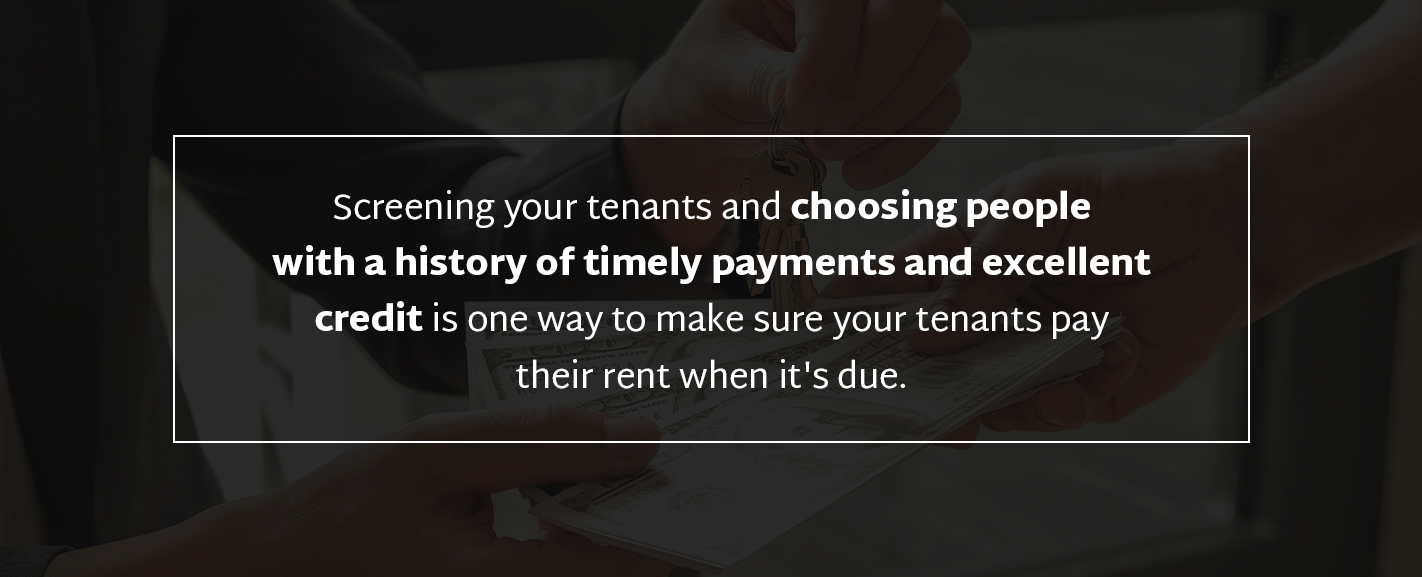
Adding on a late fee encourages people to pay on time and gives you a bit of a financial cushion if they are late. You might collect an extra 5% of the monthly rent or another $100 or so when people pay late, which can help you recoup any costs associated with having to track down late-paying tenants.
Alternatively, you can offer tenants positive financial incentives to encourage on-time payments. For example, for every six times a tenant pays on or before the due date, you can give them a $50 or $100 gift card or offer to pay one of their utility bills. Another option is to provide an incentive to tenants who prepay their rent. If a tenant can pay a certain number of months upfront, you might offer a small discount on the monthly rent. If someone can pay the entire year in advance, you might consider giving them a month for free, since they’ve helped to reduce some of your administrative and overhead costs.
Mistakes That Could Hurt ROI
Along with knowing what to do to improve rental property ROI, it’s also important to know what not to do. Recognizing and avoiding certain mistakes will help you maximize the ROI of your rental properties. Here’s what to steer clear of.
1. Buying Any Old Property
Some properties end up giving more than they take while others take a lot more than they give. A property that needs extensive repairs, either upfront or over time, is one that might not deliver the best ROI. Even if you keep the property consistently rented out, the amount you end up spending to fix things might quickly be more than what the property brings in.
There are a few red flags to look out for that can help you avoid buying a money pit. One red flag is the age of the building. While some homeowners love older houses for their charm and quirks, quirks can be an issue for you as a property manager. If a building’s quirks mean that you always need to replace fixtures or upgrade appliances, they are likely to be more trouble than they are worth for you as a property manager. Leave the quirky older properties to the DIY-ers and flippers.
Another red flag to consider is the size of the property. The bigger the building, the more maintenance and care it’s likely to need. If a property has a large yard or outdoor area, you’ll likely need to take care of the landscaping yourself or hire someone to do it. Bigger properties also tend to have more expensive maintenance costs compared to properties with smaller footprints.
2. Skipping the Tenant Screening Process
Screening tenants helps you find people who are going to pay on time and who are likely to take good care of the place. But there might be times when you feel encouraged or tempted to skip the screening process. For example, a friend’s sibling might be starting a business, and your friend might vouch for them. Or a cousin or another relative of yours might be looking to rent an apartment.
Even if you know an applicant personally, it’s still a good idea to screen them just as you would any other tenant. You want to confirm that they have an excellent rental history, for one thing. Also, screening a potential tenant and finding out that they aren’t a good match can help you politely turn them down in favor of a tenant who is more likely to pay their rent.
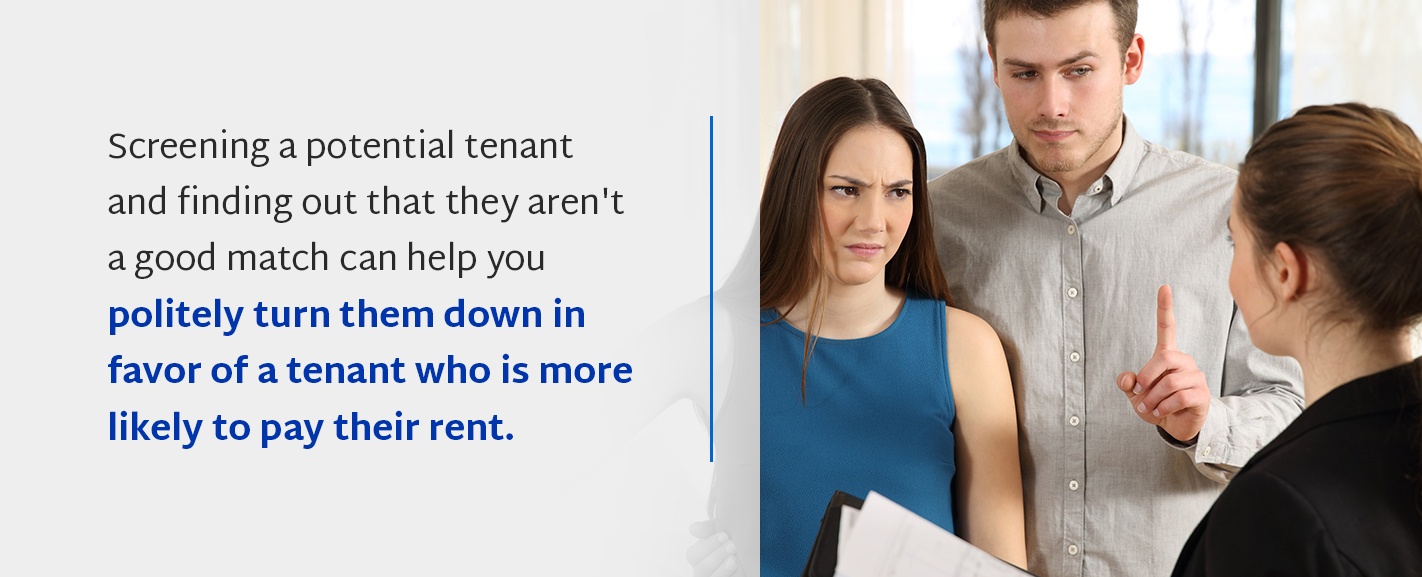
3. Forgetting That Location Is Everything
When you’re looking for properties to purchase and rent out, one of the most important things to remember is “location, location, location.” It’s more than just a real estate cliche. A property in a less developed area might cost a lot less, which can seem like it would be good for ROI. But you’ll probably need to charge much less for rent each month, which affects your bottom line. Plus, properties in areas that aren’t very popular or in areas that have poor reputations can be more challenging to rent out, as the more qualified tenants are likely to look in other neighborhoods.
4. Falling Behind on Maintenance
Cutting back on maintenance, such as by skipping appliance tune-ups and inspections, can seem like a way to cut your expenses as a property manager and save money in the long run. But if you skip or put off specific maintenance tasks, you run the risk of having to make significant repairs further down the line. And major repairs often cost more than small maintenance projects.
Plus, tenants will know if you start skimping on maintenance. If a property that was once pristine and well cared for becomes dingy and worn out, you might lose tenants who decide to move elsewhere.
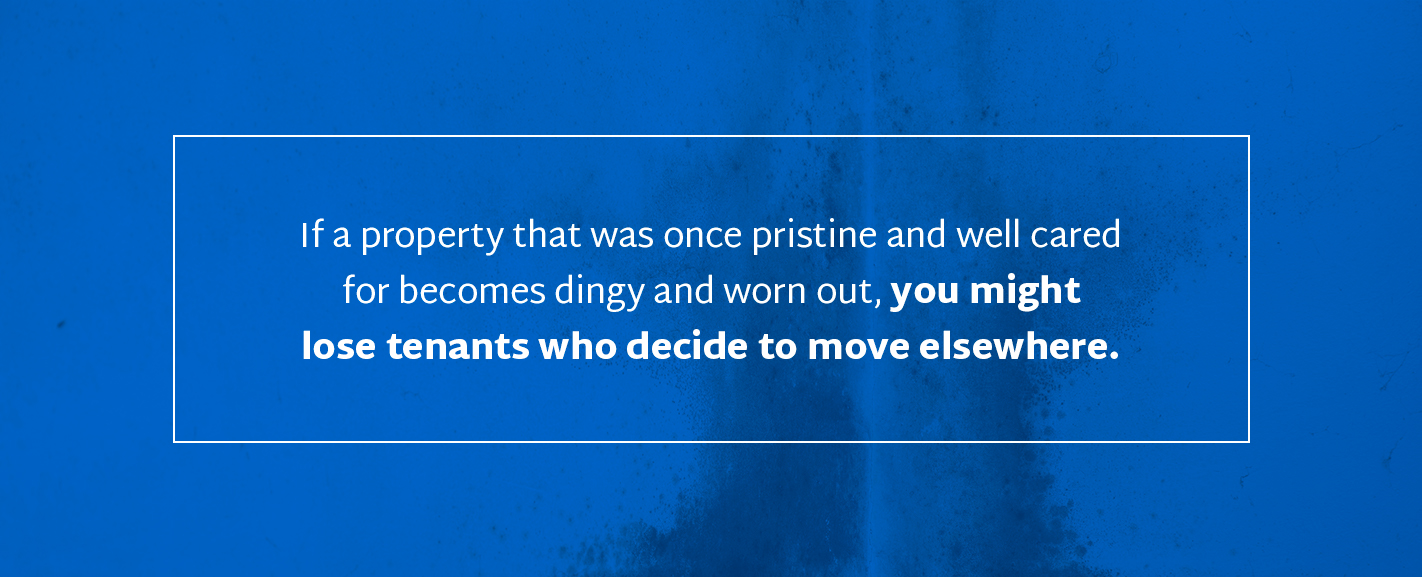
5. Not Checking in With Tenants
Speaking of your tenants, it’s a good idea to check in with them from time to time. Expecting them to come to you when they have a concern or if there’s a problem can mean that you end up paying more for repairs over time. A tenant might not think to report an issue that doesn’t seem like too big of a concern. But if you check in every month or so and ask them if there’s anything you should know about the property, they might be more likely to mention any seemingly small concerns.
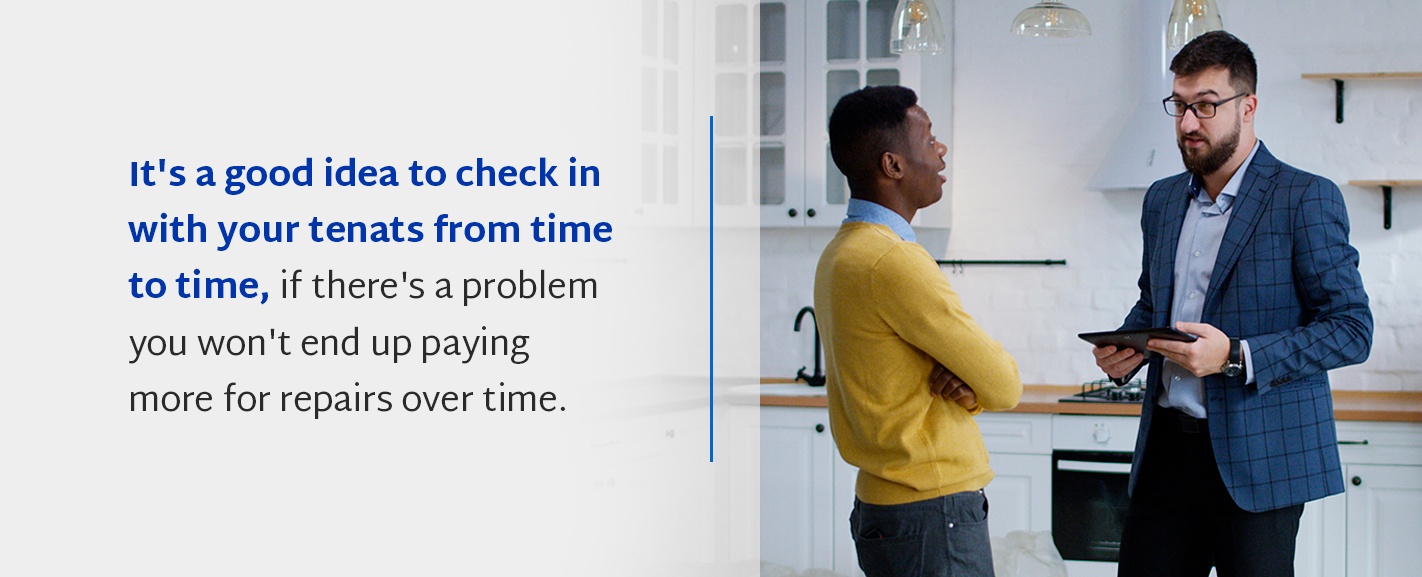
Best Ways to Get More ROI on Rental Properties
Along with avoiding certain mistakes that can affect your bottom line and lower your overall ROI, there are a few things you can do to make sure you get the most of your rental properties. Some of the best ways to improve ROI on investment properties include:
1. Give Tenants Reasons to Stay
Good tenants can be difficult to find, and the screening process can often be long and drawn-out. Once you’ve found tenants who have excellent credit and who come highly recommended, it’s in your best interest to get them to stay in the rental for as long as possible. The longer a tenant sticks around, the less time you’ll need to spend finding someone to move into the property. The rental will also be occupied for more time, so you don’t experience months without a paying tenant.
One way to encourage people to stay is to have them sign long-term leases. Offer leases for at least 12 months. You might offer the option of an even longer lease, such as 18 or 24 months. Tenants might like the idea of signing a longer lease, as it helps them plan their budgets for the next year and a half to two years. If you want, you can incentivize the longer lease by offering a discount on rent for terms over 12 months. If a person agrees to stay for two years, you can offer a free month of rent.
Likewise, commercial leases are often five to 10 years, so businesses know their customers can find them for the next decade.
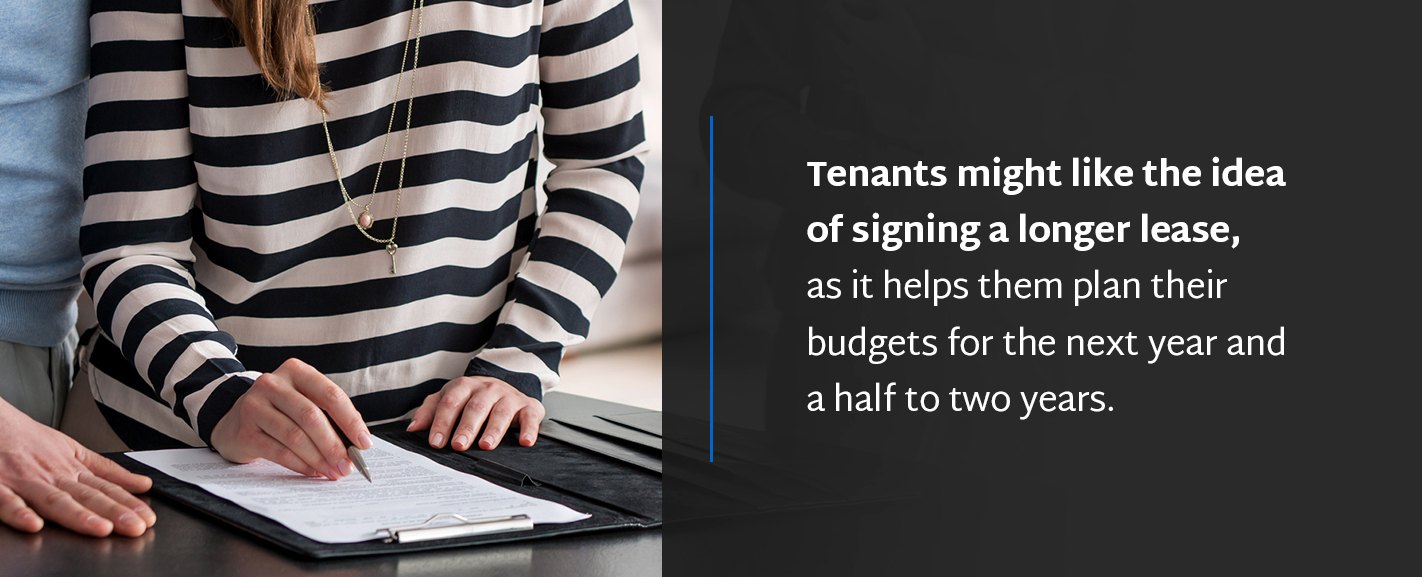
2. Encourage Tenant Referrals
If you like your tenants, you might encourage them to refer their friends or family members to your property, especially if their friends and family are reliable like they are. Getting referrals from people who already live in your properties can help you spend less on marketing those properties, boosting your ROI.
To help to ensure that the referrals work out for everyone, you can give your tenants a bonus, such as a discount on rent or offer to pay their utility bills one month, but only if the referral signs at least a 12-month lease and makes a specific number of on-time rent payments.

3. Choose Low-Maintenance, Low-Cost Properties
A steady source of rental income is just part of the equation when finding the best way to increase a rental property’s ROI. Another component is finding ways to reduce your expenses. The less work a property needs, the more of your income you get to keep. Some factors that can affect the ongoing costs of a property include:
- Its age
- Its size
- The age of its appliances
- The property tax rate
- The cost of insurance premiums
A smaller, newer building in an area with low property taxes is likely to have a better ROI compared to a large, old building in a high-tax area.
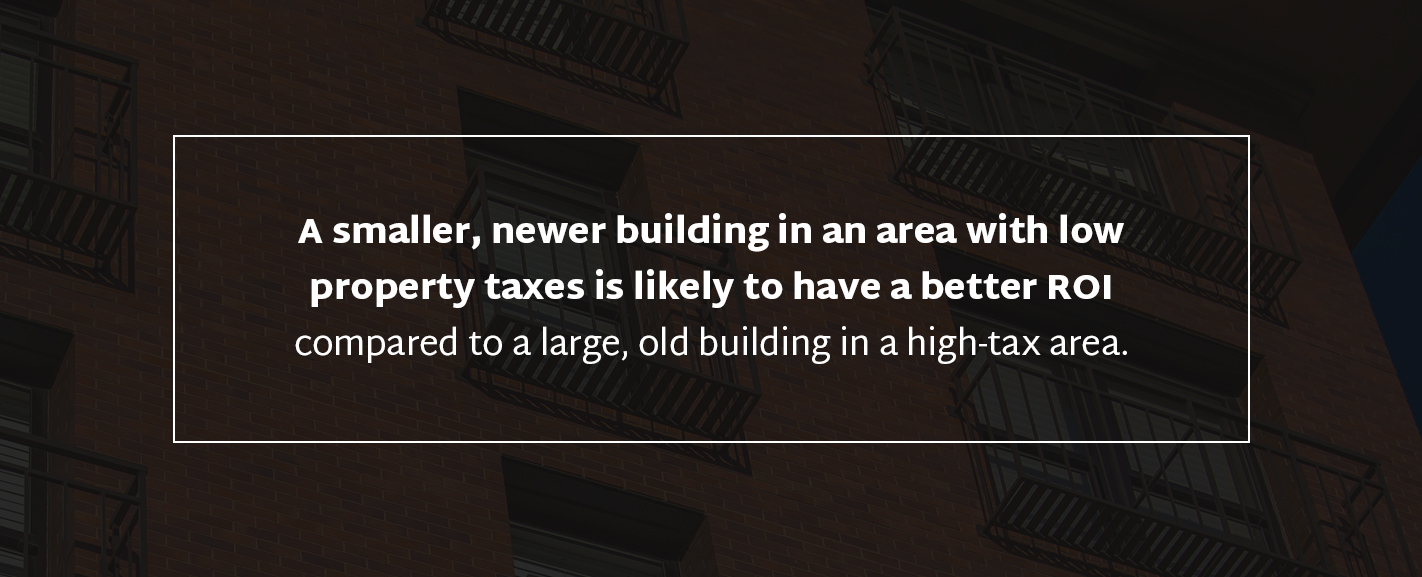
Expert Advice From Pasaban Accounting Solutions Can Help You Maximize Rental Property ROI
Are you getting the most you can from the properties you manage? Pasaban Accounting Solutions can help you answer that question. We work exclusively with companies in the real estate industry, including property managers and landlords. If you want to streamline your business’ accounting and find ways to boost your profits and ROI, we can help. Contact us today to schedule a free consultation.

